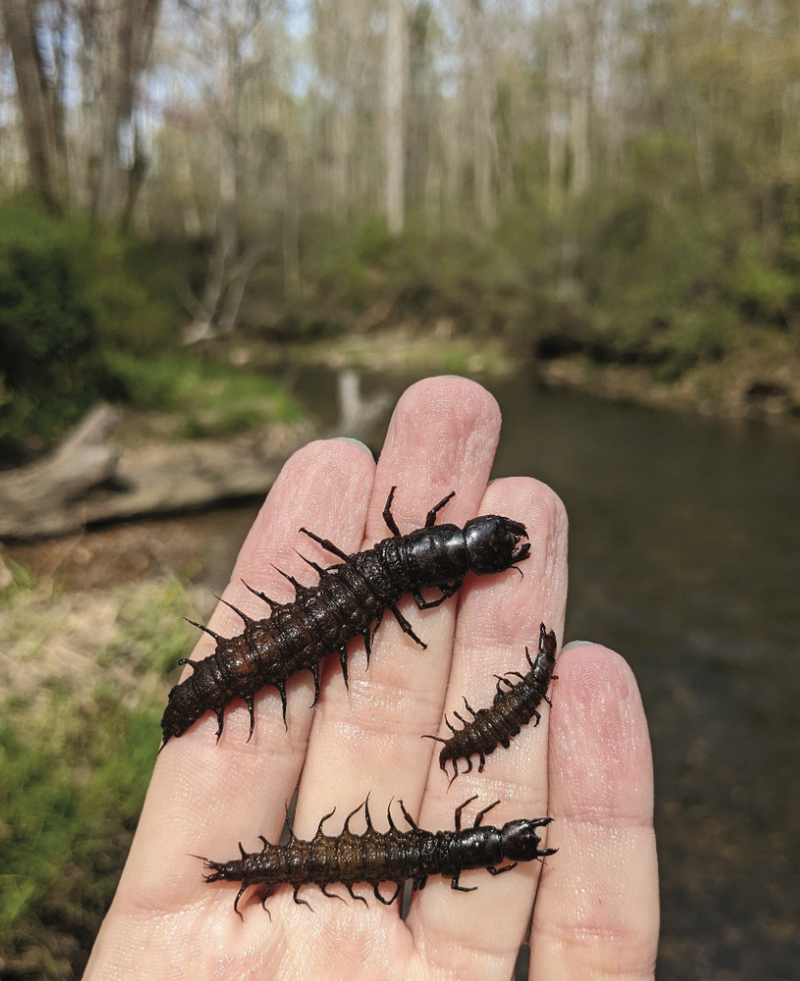The drab brown larvae can reach lengths close to that of a human finger and have mandibles with impressive bite strength (I have the scars to prove it!).
The adults don’t look much less intimidating and kind of resemble a cross between a dragonfly, a stonefly, and a small bird. The males are easy to distinguish because they have large, sword-like mandibles, which they often use to clasp the females during mating. The large, clumsy mandibles of the males are nothing to fear, but the female retains a smaller set of powerful mandibles that can inflict a painful bite.
From an ecological perspective, a hellgrammite is an aquatic insect in the order Megaloptera (meaning the large wings). All aquatic insects are called “aquatic” because they spend at least a portion of their lives in water. For a hellgrammite, greater than 90% of their lives are spent underwater growing as larvae. The lifecycle of most hellgrammites lasts up to 5 years, and all but about the last month is spent as a larva, munching on any creature it can fit between its menacing mandibles. During the last month, the hellgrammite crawls out on land to pupate in the earth or under some rotting litter. After pupation, the adults emerge and immediately start to look for a mate. The adults are mostly active at night, so many anglers don’t run into the adults very often.

Do trout eat hellgrammites? There are several scientific studies that found hellgrammites in the stomachs of trout and I have met many trout and bass anglers that provide similar testimonies. Furthermore, the multiyear lifecycle of hellgrammites means that there are always several size classes of larvae present at any time of the year. Larger hellgrammite larvae may be preferred by larger trout and even small trout can consume the smaller, younger larvae. I have also found that the classic woolly bugger does a pretty good job imitating the larvae. So, in summary, a hellgrammite is a badass looking insect that has a unique lifecycle and can provide some fun fishing opportunities!

